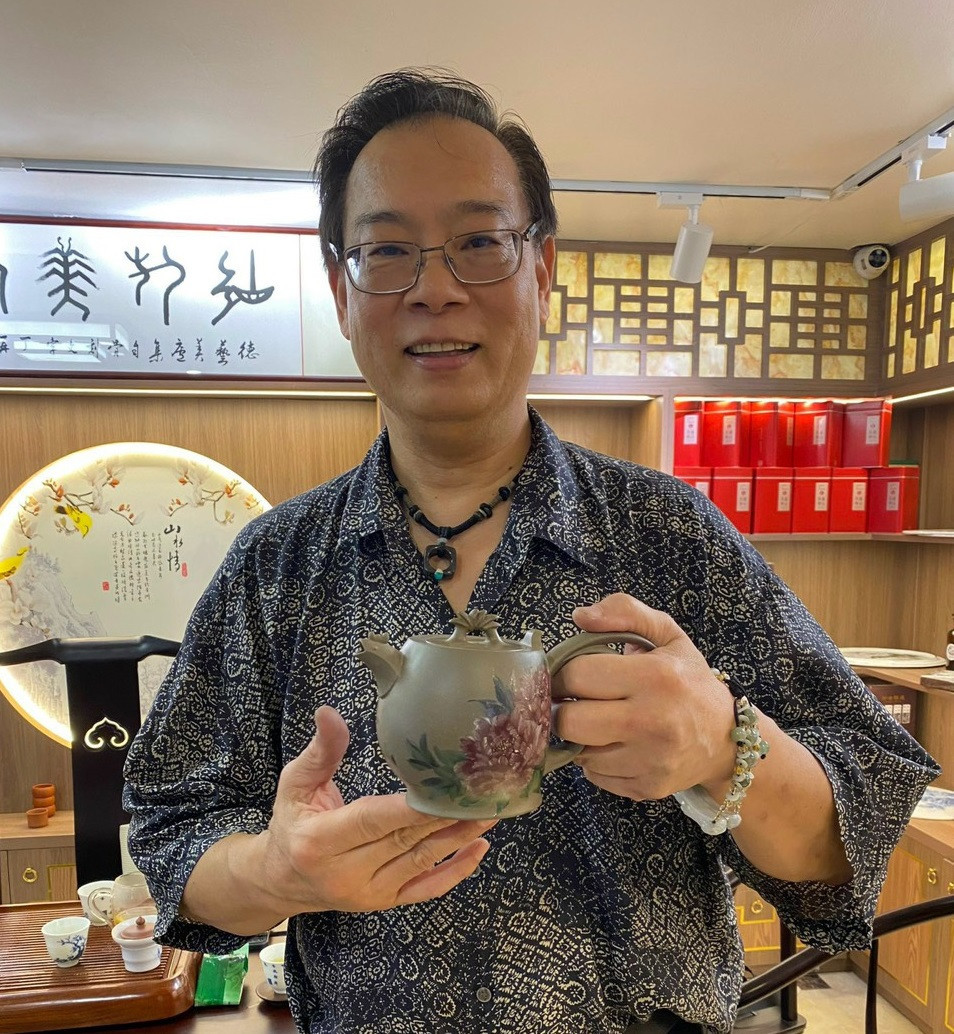
Today, in the field of ceramic art, Hong Duc Thanh is a major figure.
Thanh’s penmanship follows and develops from the Linh Nam Phai school of painting. He has achieved unity between body and soul. His works blend colors naturally, without sketches.
Thanh has recently become better known as the inventor of a special technique which allows him to draw directly on zisha teapots.
Zisha teapots originated in China, and are made of high-temperature clay. The name ‘Zisha’ comes from the Yixing region in China. The special feature of the products is that they are unglazed, which retains natural osmosis between the brewed tea and the soil characteristic.
According to Vu Quoc Dai, a collector, the technique of painting on zisha teapots is quite different from painting on porcelain, because porcelain products have a surface layer of enamel, which helps drawings adhere well. Zisha teapots don’t have an enamel cover.
Thanh had to spend many years to invent a kind of special oil, which, together with the two-way stomata, create adhesion without affecting the stomata.
The dual stomatal structure is the knowhow that porosity and high absorption. That is why the more zhisa teapot is used, the shinier it becomes.
There is a high risk of breakage, so it is very difficult to bake a zisha teapot and paint on it.
Zisha clay contains many minerals and impurities, and during the process of burning, the minerals and impurities are discharged, which may cause cracking and breakage if the temperature cannot be controlled. The breakage rate could be up to 70-80 percent.
Zisha clay itself is considered an art work and national treasure of China.
As a person who always wants to experiment with painting techniques on all materials, Thanh was determined to conquer this special material. For those who don’t have deep knowledge about zisha and arts, they will face a high possibility of failure. Luckily, Thanh succeeded.
One of his outstanding works is Phu Quy Doan Vien (riches-honours and family reunion) set of teapots with a painting of peony flowers. This is a symbol of happy, prosperous and wealthy families that is widely used in many traditional art forms.
Mai Lan